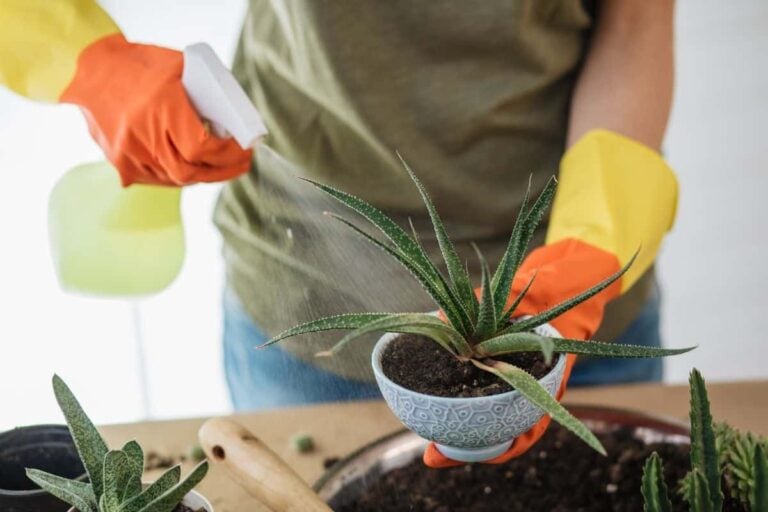Caring Guide For Your Cineraria
Cineraria describes both plants of that genus as well as plants commonly known by this name. Most are daisy-like examples available in a wide range of colors. These plants include ones that are adapted to an array of conditions. You’ll find a wide variety of colors too. Continue reading to learn more about these plants and how to find the ideal one for your garden.
What Is Cineraria?
The name cineraria may cause some confusion. Cineraria is a genus of the Asteraceae or Sunflower Family. It includes many species found in southern Africa and not native to the United States. However, they can live happily in USDA Hardiness Zones 9 through 11. As you might expect, they resemble daisies or asters. But that’s only part of the story.
The term cineraria also applies to the common name of plants that are part of the genus, Pericallis. It includes plants native to tropical-sounding places like the Canary Islands and Madeira. They have the same aster-like characteristics of the genus with the same name. The differences fall more in the domain of botanists than home gardeners.
You’ll also find some plants from the genus Senecio also called cineraria. To avoid confusion, we’ll stick with plants with the common name of cineraria rather than the genus as a whole. You’ll recognize many common plants such as dusty miller and greenhouse varieties referred to as the hybrid, florist’s cineraria. Whew! Hope you’re still with us.
Benefits of Growing Cineraria
Because it is a horticulturist favorite, you’ll find a broad range of cultivars in a stunning array of colors. In many ways, they can stand out as a showpiece for your garden or as an accent piece. Their intense colors are sure to catch everyone’s eye. As you may expect, an island-dwelling plant prefers warmer, humid climates. And this is the case with many varieties.
But with greenhouse varieties, you’ll find a greater range of suitable habitats. There are plants that prefer partial shade. You can grow it as an annual or a perennial if you live in suitable hardiness zones. With annual plants, you’ll find plants that can grow in a broader spectrum of hardiness zones. You can easily grow cinerarias even if it’s just for one season.
This video from the University of Illinois Extension discusses the importance of matching your annual plants with the conditions in your garden.
https://youtu.be/KdNILCD0-_w
Care Requirements for Cineraria
As an annual, your enjoyment of cineraria is short but sweet. Proper care, therefore, is essential to make the most of this time. Because of the various uses for cineraria, you’ll find that the plants differ in their appearances and uses in the garden. We’ll focus on two popular types you’re sure to see at your local garden center, dusty miller and florist’s cineraria.
Dusty Miller
Dusty miller (Senecio cineraria) stands out because of its stunning, silver foliage. Because it is such a departure from other plants, it makes an excellent accent piece or backdrop from more dramatically colored flowers. Its foliage is where it’s at. You might even consider pinching off any yellow flowers that come up, so the plant will focus its energy on its foliage.
This plant does well in partial shade/sun. It can tolerate a variety of soil conditions from sand to loam to clay. It prefers it on the acidic side. Dusty miller is a slow-growing plant that will get about a foot high. It’s not invasive, so that it won’t crowd out any neighboring plants. You should mulch around these plants, so others don’t take advantage of its slower growth.
You’ll appreciate the fact that it is relatively pest and disease free with proper watering. It is drought tolerant. If you water it too much or too frequently, then you may have problems with it such root rot. Like of a lot of plants of its ilk, it’ll fare best if you let the soil dry a bit between waterings. Deer rarely damage dusty miller, so you’ll have no worries there.
If you can grow it as a perennial, you should cut it back about one-third before the next growing season. Like shrubs, this pruning will encourage new growth for the following spring. You can also trim it back during the season if it gets spindly to foster denser growth. Make it a point to remove any dead or damaged branches.
Florist’s Cineraria
Florist’s cineraria is the polar opposite of dusty miller. Where it is diminutive, florist’s cineraria is a plant that will grab your attention. It will get about two feet high in the right conditions. It has daisy-like flowers that you’ll find a wide swath of vivid colors from red to blue to purple—and everything in between. It also comes in white if you prefer something less showy.
Its care is similar to that of dusty miller. It prefers partial shade/sun and rich, well-drained soils. You shouldn’t over-water cineraria as it does better in moist rather than soggy soils. It likes the same soil conditions as dusty miller so that they would do well together in a garden. And if you live in a zone it can tolerate, it’ll reseed itself for the next growing season.
You can grow cineraria as a houseplant too. You’ll get the best results placing it in a room with bright or filtered light as long as it’s on the cool side. It prefers daytime temperatures in the 65 degree Fahrenheit range, not unlike its native habitat in the Canary Islands. When kept in these conditions, you’ll get the most vigorous growth and the most number of blooms.
Cinerarias offer great ways to add some dramatic color to your garden. Whether you grow them as annuals or perennials, they will continue to deliver with stunning foliage. If you’re looking for an attractive focal point, take a look at the beautiful varieties of cinerarias. They can act as the ideal border to welcome visitors to your garden.
Photo by szjeno09190 licensed under CC0.




